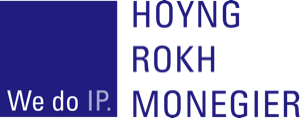Letter from EPLAW President Sture Rygaard: A new era for European patent law – and the reason why EPLAW was made
Today is a historic day for patent law as the Unified Patent Court and the Unitary Patent come to life. This will start a new era for European patent protection and enforcement.
Since the 1970’s and the signing of the Community Patent Convention in 1975 attempts have been made to create a common patent enforcement system in Europe. Different approaches have been worked on for years – and discarded. But today the Unified Patent Court opens its doors and allows for enforcement of patents in many (currently 17) European states in one go, and a patent with unitary effect (UP) in all these states is made available. What has been considered and worked on in different set-ups since the 1970’s is now becoming a reality.
After different stranded attempts, an Intergovernmental Conference was held in June 1999, and it gave rise to the creation of a Working Party on Litigation aiming at building a so-called European Patent Litigation Protocol (EPLP) as an optional protocol to the EPC, whereby the EPC states would give a central court the power of decision over disputes arising about European patents.
This revival of the idea of creating a common European patent enforcement system triggered the idea of creating EPLAW. A handful of patent lawyers thought that they could contribute to this project, and so in March 2000, 20 lawyers from Belgium, France, Germany, Italy, Spain, the Netherlands and the United Kingdom convened in Pierre Véron’s offices in Paris. This group of lawyers decided to create the European Patent Lawyers Association so that their voices could be better heard. And so EPLAW (or EPLA as it then was) was created in July 2001. For more on the founders see here and not least the photos from the creation here.
The aim of EPLAW was – and still is – promotion of equitable and efficacious handling of patent disputes across Europe and the strengthening of links between well-established patent lawyers in Europe.
And now, some 22 years later, we are here – the European patent project which was re-ignited in 1999 is now – on 1 June 2023 – becoming a reality. It has been a bumpy road. Bumpier than anyone had imagined.
During the preparations, the minds and voices of EPLAW lawyers have indeed been very active, and they have been heard during the creation of the new patent system.
EPLAW lawyers have played a crucial role in thinking out the new system, and helping with the drafting of the rules – including the UPC Rules of Procedure and the ethical rules of conduct for representatives; in reviewing applications and finding the right legal and technically qualified judges; in creating educational materials on European patent litigation together with the EPO (including Patent Litigation in Europe, Patent Enforcement in Europe and The jurisdiction of European courts in patent disputes), and more recently EPLAW has assisted in the training of UPC judges.
Where will the UPC go – our tasks remain
The new UPC system starts a new era in patent enforcement in Europe. The UPC rules have been kept relatively open, allowing for a variety of procedural variations. Will the new system develop into a beautiful swan or a many-headed monster? The aim and the hope is that the UPC will become the world’s leading patent enforcement system, being efficient, while still striking a good balance between the claimants’ and the defendants’ rights to a fair and reasonably fast trial, and making wise, well-reasoned decisions with its specialized judges (no jury trials here).
There is an important balance to be struck. The patent system is there to protect novel and inventive contributions. The EPO is there to make the first assessment of whether there is an invention which deserves a patent monopoly. But a granted patent is not carved in stone. Typically, about a third of the patents which are opposed at the EPO are revoked, and about another third are changed and limited during the EPO opposition proceedings. A further number of patents are revoked or limited when they are tried by the courts.
So even after the grant, there is a need for a balanced approach in the enforcement system which allows for the patents to be assessed in more depth than is possible during the initial examination, where the only party is the applicant.
We are excited about the new system and are confident that it will create a predictable and faster patent enforcement system, which is in the interest not only of large patentees with almost endless resources, but also for defendants in general and not least for smaller businesses.
In the quest for an equitable and efficacious handling of patent disputes across Europe, EPLAW has contributed extensively to the making of the new UPC system. But our tasks remain. With our 360+ experienced patent lawyer members across Europe, who would be better positioned to follow how the new system evolves? EPLAW’s members’ front-line position gives us the best insight as to how the system is functioning – and whether there may be room for improvement (as in any new system). We may perhaps take on the role of watchdogs and “bark” if we see room for improvement.
We hope that you will help us with this task and encourage you to share with colleagues, those in the system, and in particular with your fellow EPLAW members through the EPLAW Board, if you have feedback for the UPC system which you think we could carry forward.
In conclusion, we are thrilled that the new European patent system is now in action, and we believe it has the framework to become the world’s leading patent enforcement system, and hope that we can all contribute to that end in our work before the new Court.
Best regards,
Sture Rygaard,
President of EPLAW













